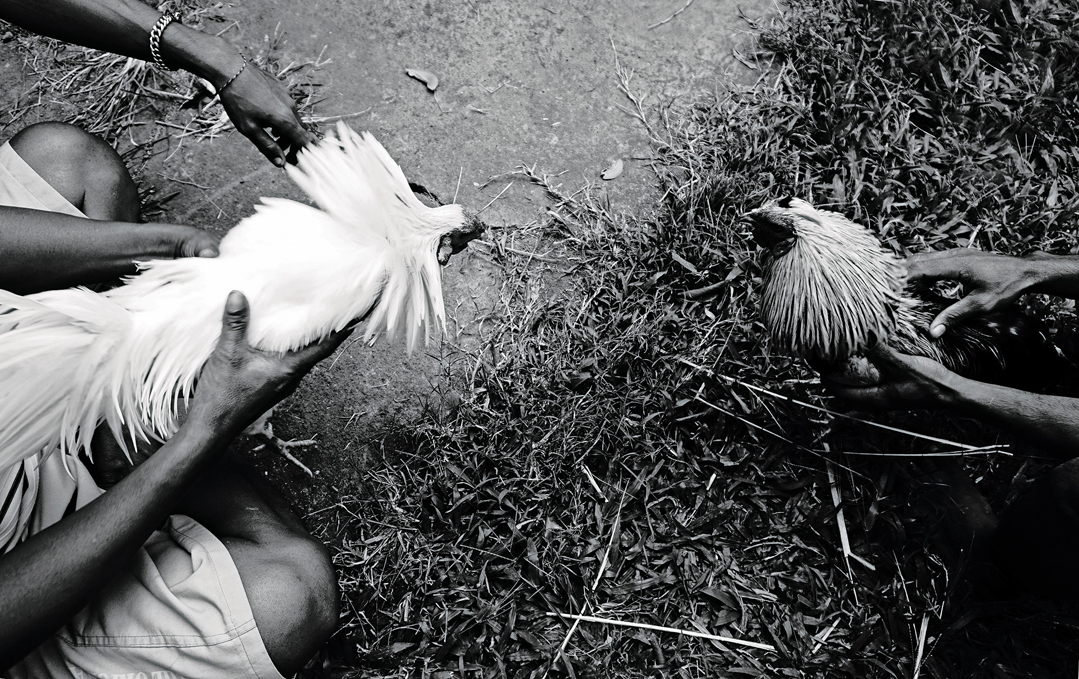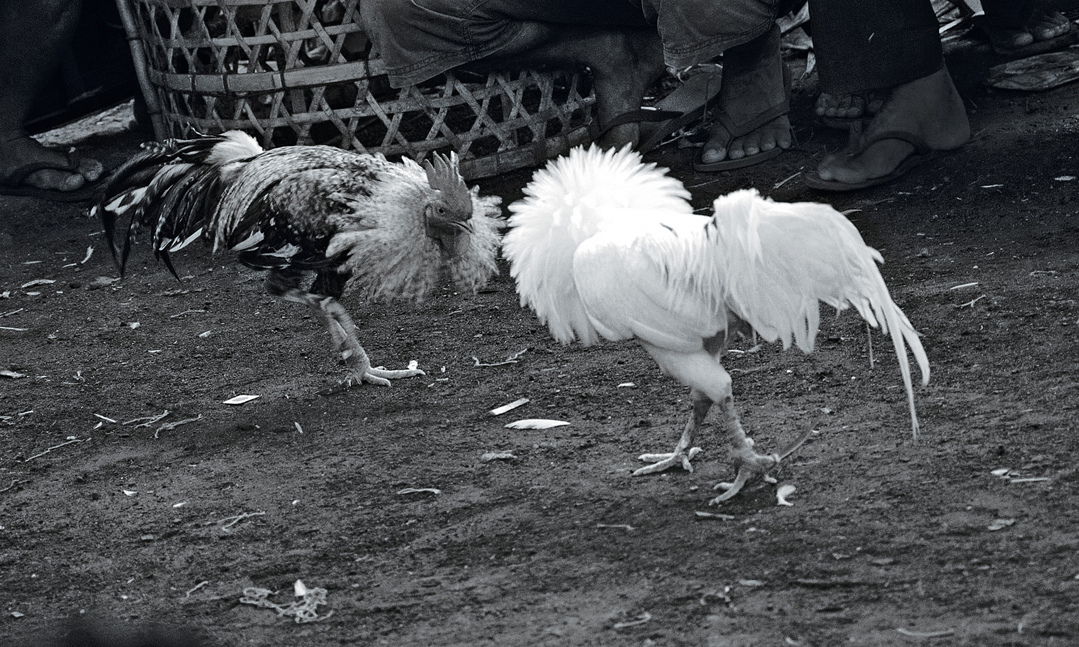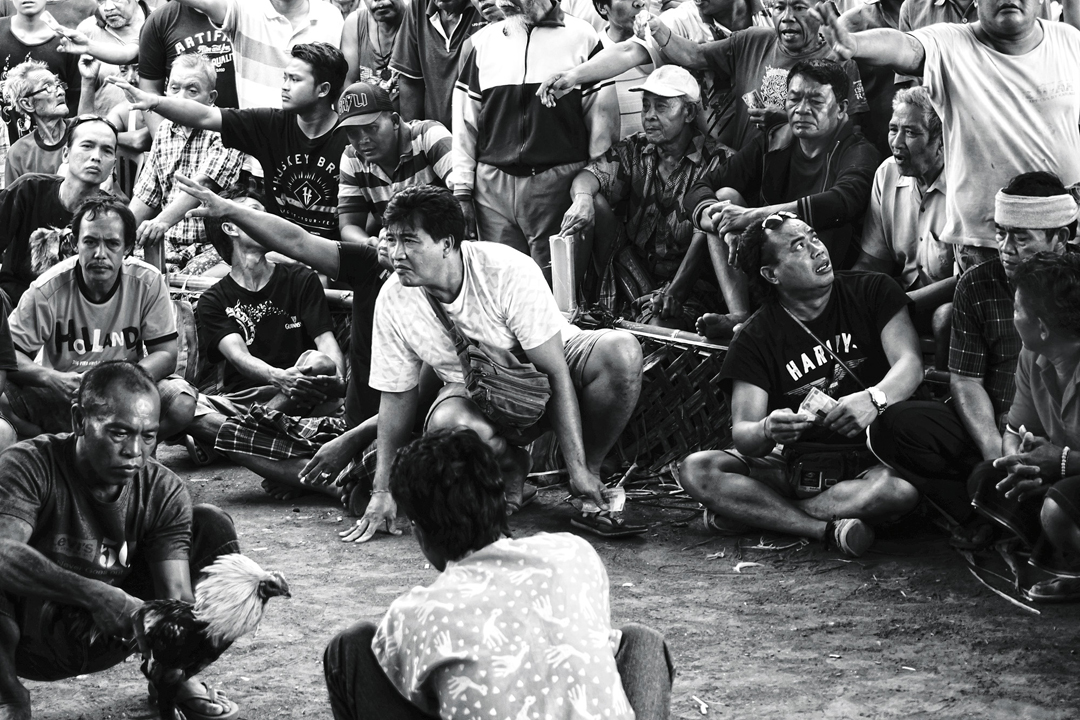You can always tell when a cockfight is going to happen in Bali. The first sign is the beautiful woven bamboo or rattan baskets held tightly on the back of a speeding motorbike as the proud owner makes his way to today’s specially selected spot. The next sign is a huge number of motorbikes crowded into a small space by a clearing or tented canopy. It doesn’t take Sherlock Holmes to figure out what’s going on.

Once you leave the south and head to the verdant hills of central Bali, you are coming to the more traditional area, where cockfighting is a common occurrence. The official story is that cockfighting only exists in the front of a temple on special holy ceremonial days. This Tabu Rah is a ceremonial fight that spills blood at the temple entrance and only two birds are used in one quick bout. Not a lot of interest there. But in reality, the Balinese, like Australians and Chinese love to gamble. The tension and electrifying energy that accompanies a Balinese cockfight as the punters all try to get the attention of the betting men is palpable. It’s almost better than the actual fight. With hands flapping and the odd cries that issue forth it is a big part of the performance. Now, even while some men are losing their shirts to gambling, a percentage of the gambling proceeds goes to Banjar building projects, which at least helps the community involved.
But the reality could be a little different and it is widespread. Even though cockfighting is Bali’s unofficial national sport, finding a cockfight is not a walk in the park. Meetings are often clandestine, hidden away from prying eyes and you will probably need a helpful guide.

Cockfighting is an ancient sport or ritual that dates back around 6,000 years. Aggressive birds that have a propensity to fight are bred to increase their aggressiveness, strength and stamina. A long time ago, a Welsh friend of mine who was a bit of an expert in Welsh cockfighting lore used his knowledge as an entre to Balinese society. There is nothing like combining knowledge to move things along. The sport is widespread from Europe to Mexico and across Asia, especially in India and the Philippines and Thailand, where apparently, they have specialist veterinarians at hand to stitch up favoured birds. In Bali, once you’re cut, you die and into the soup pot you go!
But when it was introduced to Bali, remains a mystery – what we do know is that the Balinese, as is their want, imbued it with spirituality and gave it new depth and meaning.
Even as the Indonesian Government frowns upon it, and allows it only for ritual purposes, it is a bit like trying to stop the tides, or stem the flow of a flooding river. It just goes on. So the people and the government have reached a kind of compromise. Let everyone pretend it doesn’t exist, rather like the way we don’t see bathers in a stream. Sekala and Niskala merge once again.

While many westerners or visitors condemn cockfighting as cruel, one wonders, if they ever see those poor bedraggled white chickens that get driven around town in small trucks. These poultry last 42 days or less, from birth till death, before they are slaughtered, ready to end up on a tourist’s dinner plate. These are the real victims and not only in Bali, of course, but in every chicken factory around the globe. By comparison, the fighting cocks live a grand life for a good two years or more. Cossetted and petted daily, they are few a good diet of wholesome food, free of those antibiotics and hormones that are fed to the food chickens.
Apart from anything else, in an increasingly industrialised environment, ‘tajin’ gives Balinese men a chance to enjoy their Balineseness, freed for a while, of all the other detritus they need to handle in their lives.









